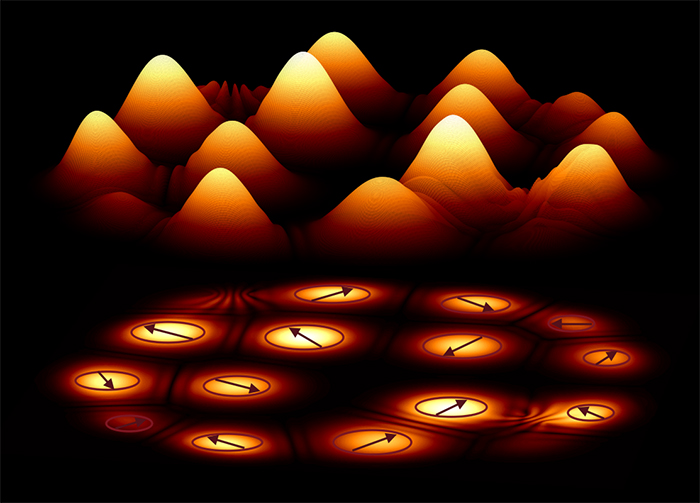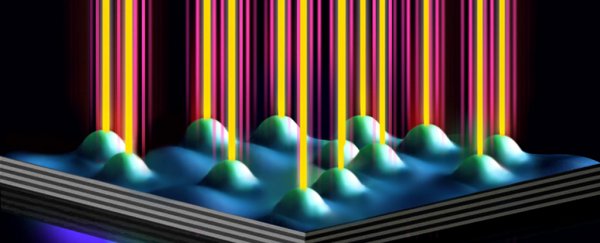There's more than one way to build a supercomputer, and researchers have come up with a new method for crunching data on a massive scale: using a type of 'magic dust' made from quantum particles called polaritons.
These polaritons are half light and half matter, and scientists have been able to demonstrate how they can act as beacons lighting the way towards the quickest solutions for complex mathematical problems.
According to the international team of researchers behind the idea, that could lead to a new breed of supercomputers able to handle previously unsolvable problems in the fields of biology, finance, and space travel.
"We are just at the beginning of exploring the potential of polariton graphs for solving complex problems," says one of the researchers, Pavlos Lagoudakis from the University of Southampton in the UK.
"We are currently scaling up our device to hundreds of nodes, while testing its fundamental computational power. The ultimate goal is a microchip quantum simulator operating at ambient conditions."
 University of Cambridge
University of Cambridge
As powerful as modern-day supercomputers are, they struggle with certain subtypes of problem, and that includes particular cases where they need to find the simplest possible route towards an answer.
The researchers compare these types of thorny problems to trying to find the lowest point in a mountainous terrain filled with valleys and trenches – how do you work out where the lowest point is without walking up and down hills for days on end?
Whereas super-fast computers can certainly do all that walking faster than ever before, polaritons offer a new approach: they effectively act as hotspots to guide our hypothetical hiker towards the lowest point much quicker, saving a lot of shoe leather.
It's a bit like sprinkling magic dust on the mountain landscape, the researchers say, but it's taken them several years to get from their first hypothesis to a demonstration of the technique using experimental data.
Polaritons were created by shining a laser at stacked layers of atoms including gallium, arsenic, indium, and aluminium, causing the electrons to absorb and emit light of a specific colour, and producing polaritons – where these electrons and their light waves co-exist in a new type of quasiparticle.
As polaritons are 10,000 times lighter than electrons, they can be packed very close together (entering a strange state known as a Bose-Einstein condensate), pooling and lighting up in a way that can be measured.
In place of a mountainous terrain, the researchers set their polaritons on a classic optimisation model known as an XY model – one that's simple enough to be of use but also versatile enough to apply to a lot of different supercomputing problems.
The researchers were able to demonstrate polaritons grouping together at a point showing the route to the quickest solution for the problem presented.
This is a brand new approach to supercomputing, and so we're a long way from seeing it actually applied in a working machine, but the team says there's enough promise in the approach to make it worthy of further investigation.
"A few years ago our purely theoretical proposal on how to do this was rejected by three scientific journals," says one of the researchers, Natalia Berloff from the University of Cambridge in the UK.
"One referee said, 'Who would be crazy enough to try to implement this?!' So we had to do it ourselves, and now we've proved our proposal with experimental data."
The research has been published in Nature Materials.
